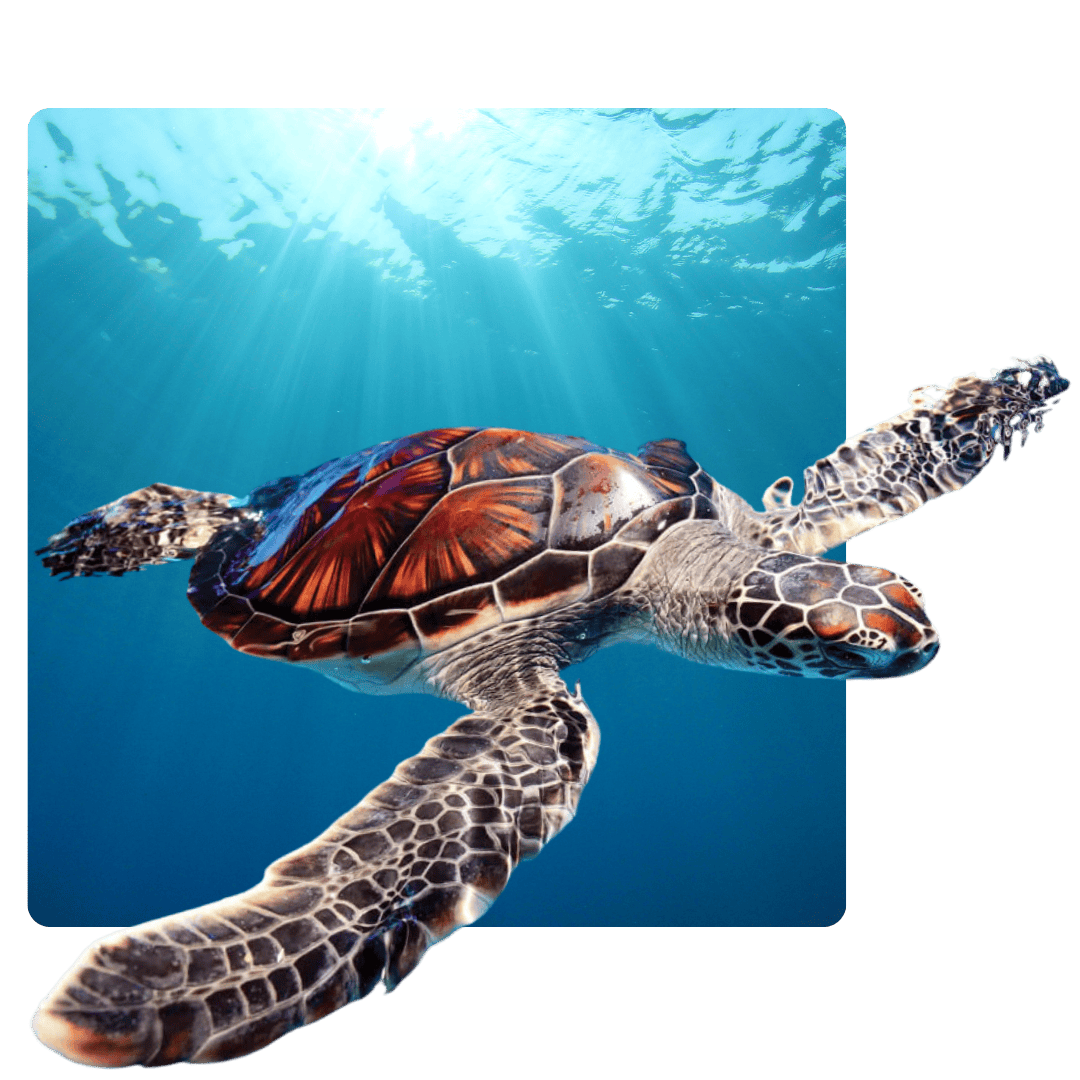Picture all the beautiful coral reefs you’ve seen in photos, the wonderful array of fish that call Maui home, and the amazing flora that lightly sway with passing currents. Now put yourself in the water, wearing your snorkel, mask, and fins, having an up close and personal view of what you’ve only seen online. That’s what you’ll get with the best snorkeling in Maui.
Maui boasts some of the most spectacular snorkeling in the world. Underwater landscapes have been sculpted and shaped by volcanic activity, and further nurtured by the warm currents of the Pacific. Incredible diversity of marine life swim in and around coral reefs, offering an unforgettable underwater adventure, no matter your snorkeling level.
We’ve put together a guide of the best places to snorkel in Maui, from more experienced sites, to Maui’s hidden beaches, to spots great for beginners. If you’re with us on Maui for just one day, or staying for an entire week, this guide offers everything you need to know, where to snorkel, and what to bring.
Best Places to Snorkel in Maui
Let’s get right into the top snorkeling spots for all skill levels, with crystal-clear water, vibrant coral reefs, and unforgettable encounters with Maui’s marine life.
Maui Ocean Center
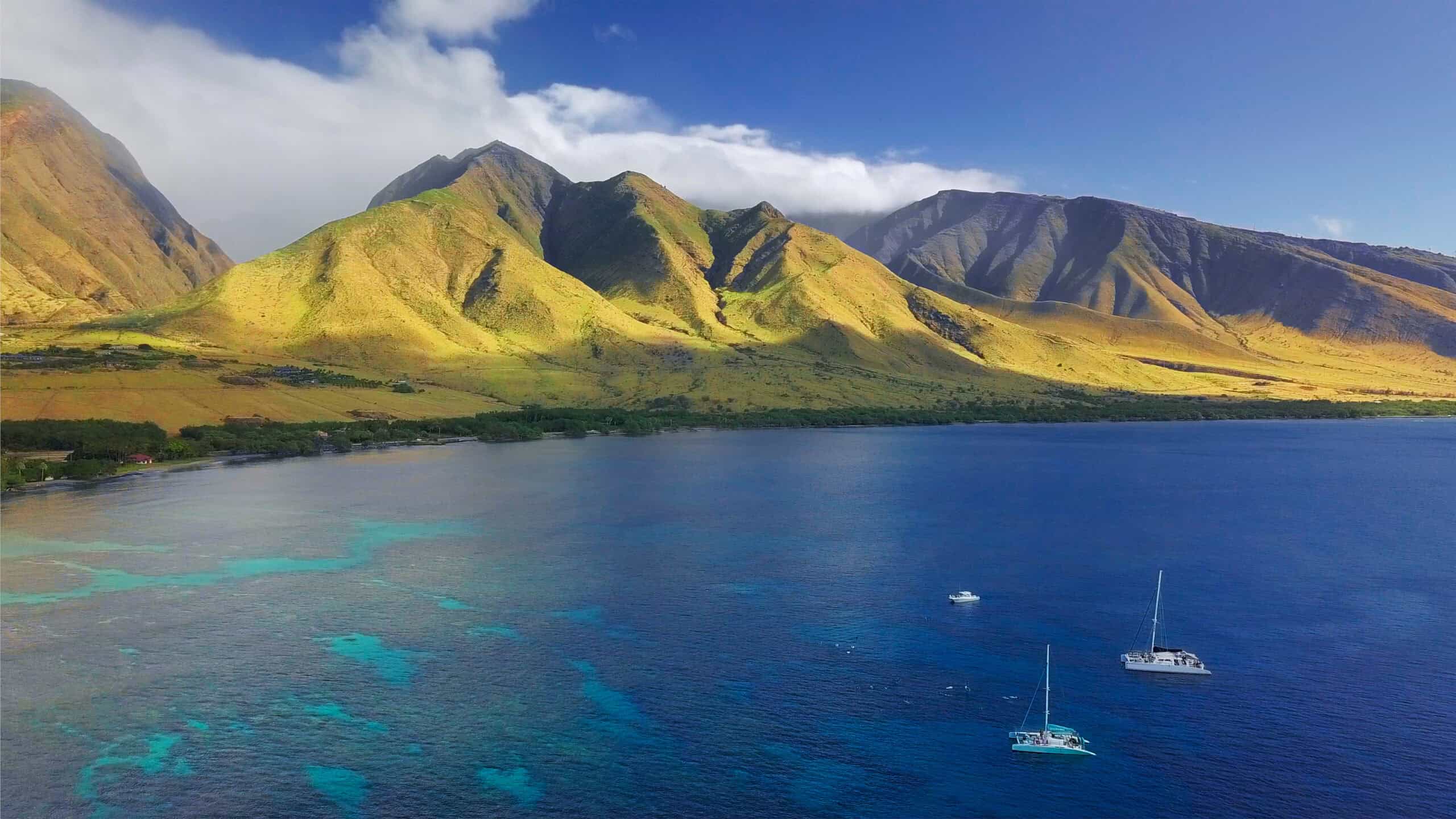
Join Maui Ocean Center and Conservation Snorkel Tours for a guided snorkeling tour of Maui’s oldest reef, Olowalu, often referred to as the Mother Reef. This fun and educational tour is perfect for families with children ages eight and older. Expert guides will answer any questions you have as you swim amongst the reef’s most incredible sites. You’ll learn all about the reef’s unique ecosystem, native marine life, and even how to protect this underwater wonder. Basic swimming skills are required, but all necessary equipment is provided, including flotation devices.
People come from all over Maui to visit us. Click here for all the information you need to know about directions and parking. For more information about this amazing experience and to buy tickets, visit our snorkeling tour page on our website here.
Honolua Bay Snorkeling
Honolua Bay is located on Maui’s northwest shore and is a paradise for experienced snorkelers. The bay offers an unforgettable snorkeling experience with its lava rock formations and incredible surrounding. It’s slightly more adventurous in nature and is more suited for confident swimmers and people comfortable in deeper water.
How to Get There
Honolua Bay is located within the Honolua-Mokulē’ia Marine Life Conservation District. If you’re driving, take Highway 30 north from Lāhainā or Kahana. Turn left onto Lower Honolua Road and follow it for about a mile until you reach the parking lot. Parking is limited, so your best bet is to get there as early as possible.
What to Expect
While stunning, Honolua Bay does offer some challenges. The water is very clear but can have strong currents, especially near the reef. Sturdy water shoes are essential to navigate the rocky entry and exit points. For the best snorkeling, head to the west side of the bay and follow the rocky shoreline around Kalaepiha Point. This area offers the most clear water and the most abundant marine life.
Slaughterhouse Beach Snorkeling
Also known as Mokulē’ia Beach, this beach earned its name from a former slaughterhouse that once operated on the land. But its history is well behind it, and Slaughterhouse Beach is now a gem for snorkelers offering amazing coral reefs and colorful fish. If you’re looking for a more secluded snorkeling experience, go north of the main entrance.
How to Get There
Slaughterhouse Beach is located on the northwest shore of Maui, just north of Kapalua. Your spot to turn in is off Highway 30, and you’ll see a chain-link fence on the ocean side of the road.
What to Expect
The beach offers clear visibility in calm mornings, but due to waves and currents, it’s best for experienced snorkelers. Conditions can also change rapidly. Be prepared—there are no restrooms, showers, or lifeguards at the beach.
Nāpili Bay Snorkeling
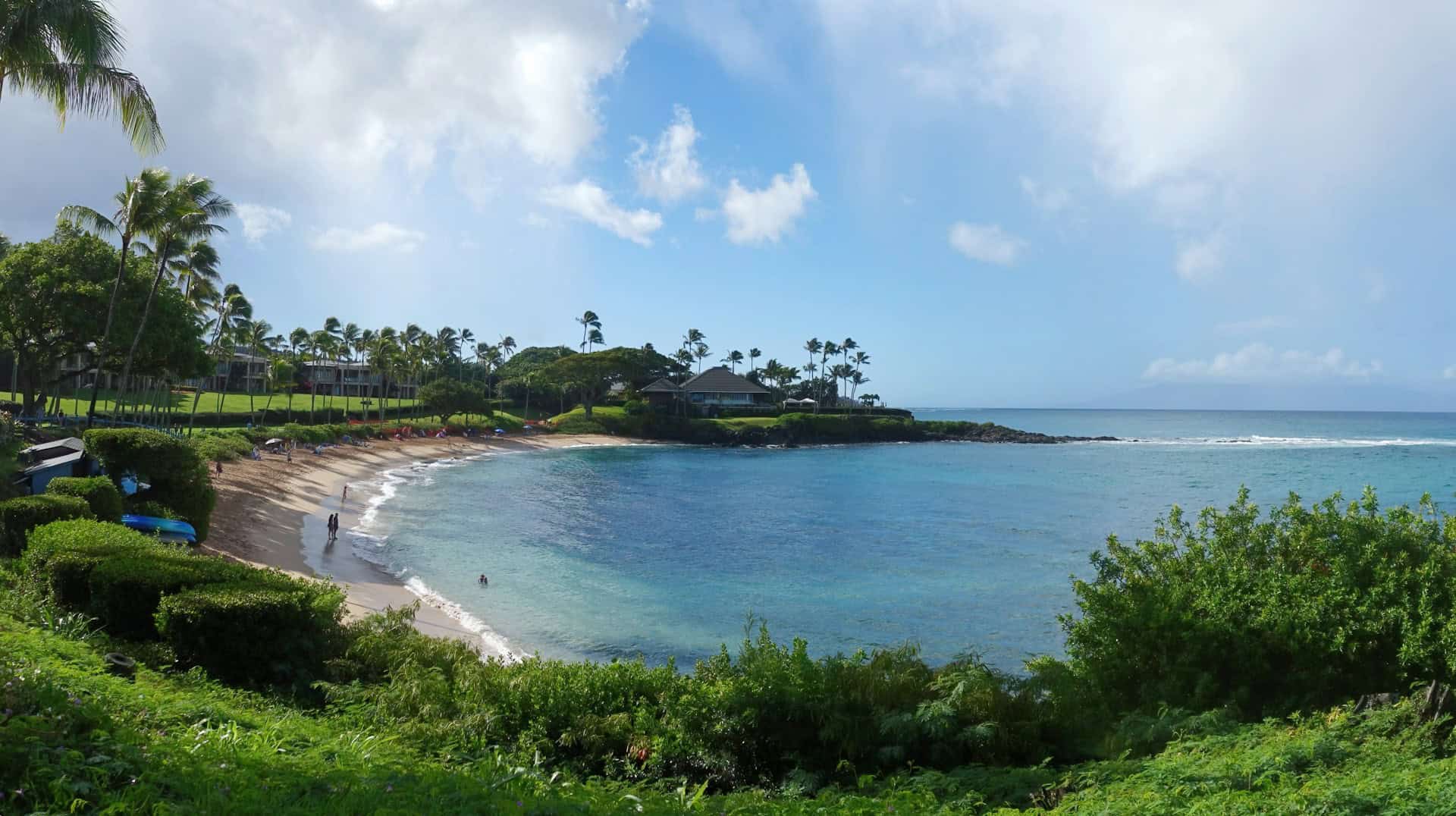
Nāpili Bay resides on Maui’s northwest shore and is a lovely spot to snorkel with its soft sand and coral reefs. Its crescent-shape offers an idyllic spot for all skill levels, making it a popular choice for everyone. Once in the water, you’ll be greeted by a variety of fish, including the lauwiliwili nukunuku ‘oi‘oi (butterflyfish), honu (green sea turtles), and an underwater terrain of coral reefs, rocky outcroppings, and sandy areas—the perfect home for all of its sea life.
How to Get There
When driving, head northeast on HI-30 E and turn left onto Napilihau Street. It may be hard to find parking during peak season, but there is free street parking available along Nāpili Place and Hui Drive, both short walks from the beach.
What to Expect
Nāpili Bay offers good snorkeling year-round. You’ll find the clearest water during calm summer mornings. For the best underwater experience, head to either side of the bay. The left side has more reefs and potential sea turtle sightings, but can get murky when it’s windy. The right side lets you snorkel along the rocky edges. Don’t worry about entry and exit points, as there are various points along the beach.
Kāʻanapali Beach Snorkeling
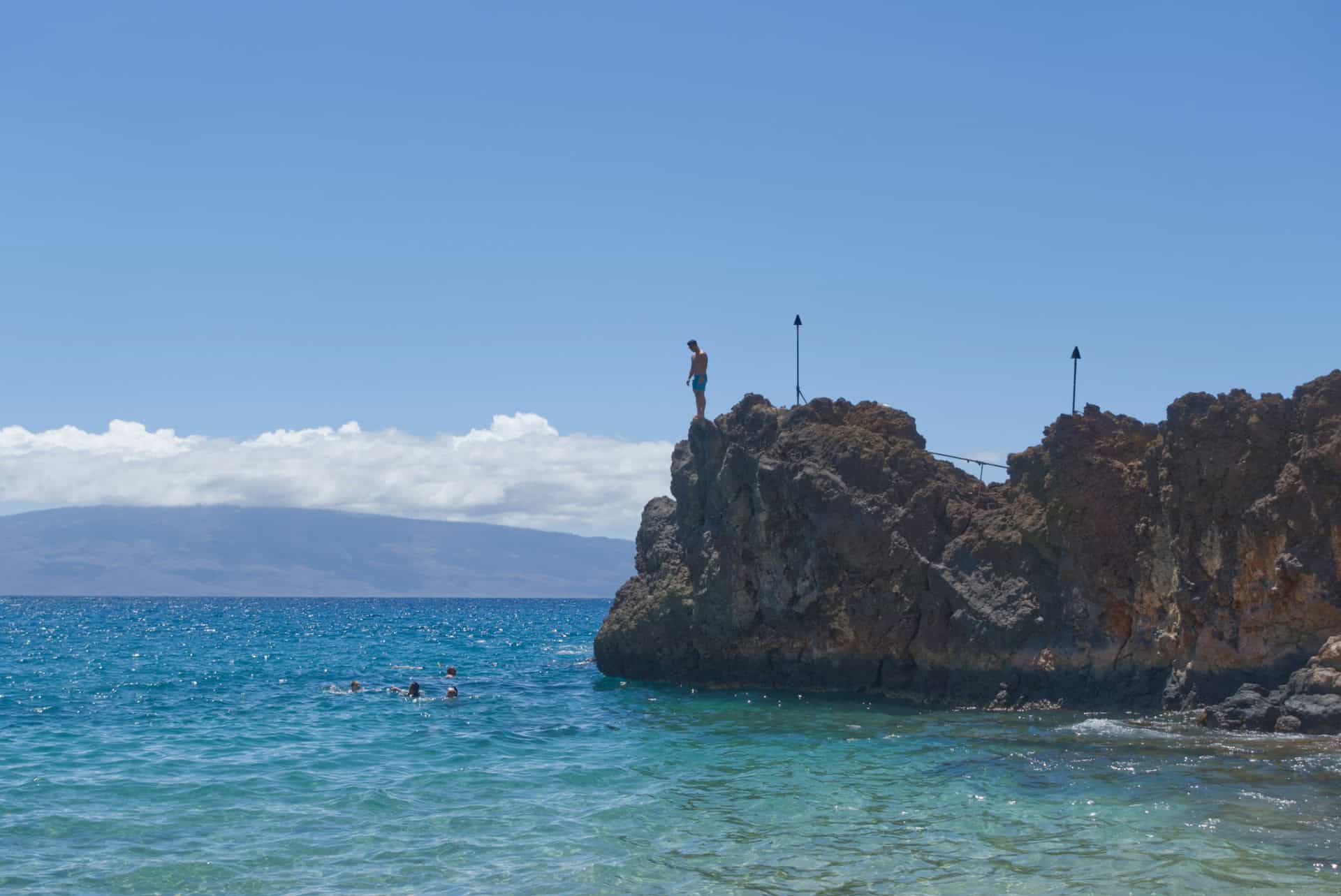
Kāʻanapali Beach stretches for miles along the west coast. Its soft white sand and crystal-clear waters are matched with a wonderful display of underwater life. Fish, including butterflyfish, tang, and even the occasional humuhumunukunukuāpuaʻa (triggerfish) all swim alongside eels, octopus, and even sea turtles (if you’re lucky). The coral reefs are not as extensive as some other snorkeling spots in Maui, but underwater rock formations around Black Rock—a lava rock outcropping located at the north end of the beach—creates a nice habitat for sea life and a unique experience for snorkelers.
How to Get There
The beach stretches from Kahana in the north to Lāhainā in the south, but the prime snorkeling area lies at the north end of the beach. Most resorts and hotels in the Kāʻanapali area are within walking distance of the beach but there is public parking available if you’re driving.
What to Expect
Snorkeling conditions vary by where you are on the beach. The north end near Black Rock boasts calmer waters perfect for snorkeling, but there is the potential for strong currents. The water is generally very clear, especially in the mornings, although weather and runoff can affect visibility.
Kama’ole Beach Snorkeling
Kama’ole is a trio of sandy stretches in Kīhei. All three offer snorkeling, but the best spots actually lie around the rocky outcroppings that separate them. From an amazing array of tropical fish—like butterflyfish, tang, and damselfish—to the potential sea turtle sighting, you’ll witness the magic that lies in the underwater lava rock terrain of Kama’ole.
How to Get There
Reaching these beaches is easy. When driving, simply follow South Kīhei Road and look for signs for each of the beach parks. You’ll find plenty of parking either in lots or along the road.
What to Expect
Kama’ole Beaches are known for their calmer waters, but always stay alert for changing conditions as there are no lifeguards present. There are also no public restrooms, so keep that in mind. You can rent snorkeling gear from the shops located near the beaches.
Keawakapu Beach Snorkeling
Located in South Maui lies Keawakapu Beach, a long stretch of what you think of when it comes to Maui’s beaches—golden sand and crystal blue water. While this beach isn’t known for its coral reefs, snorkeling here does still offer a great underwater experience. The northern end of the beach consists of rocky outcroppings, home to colorful fish species like butterflyfish and wrasse. If you get there early enough, you may even spot a sea turtle munching on algae near the rocks.
How to Get There
Keawakapu Beach is conveniently situated between Wailea and Kīhei in South Maui. Look for signs along South Kīhei Road to locate the beach access point, marked by a pathway between two grand beachfront mansions. There’s free public parking across the street for easy beach access.
What to Expect
Expect to find shallow waters and calm conditions, making this spot a go-to for families. There are no lifeguards at the beach so swim with caution. This beach thankfully has a public restroom located near the parking lot.
Wailea Beach Snorkeling
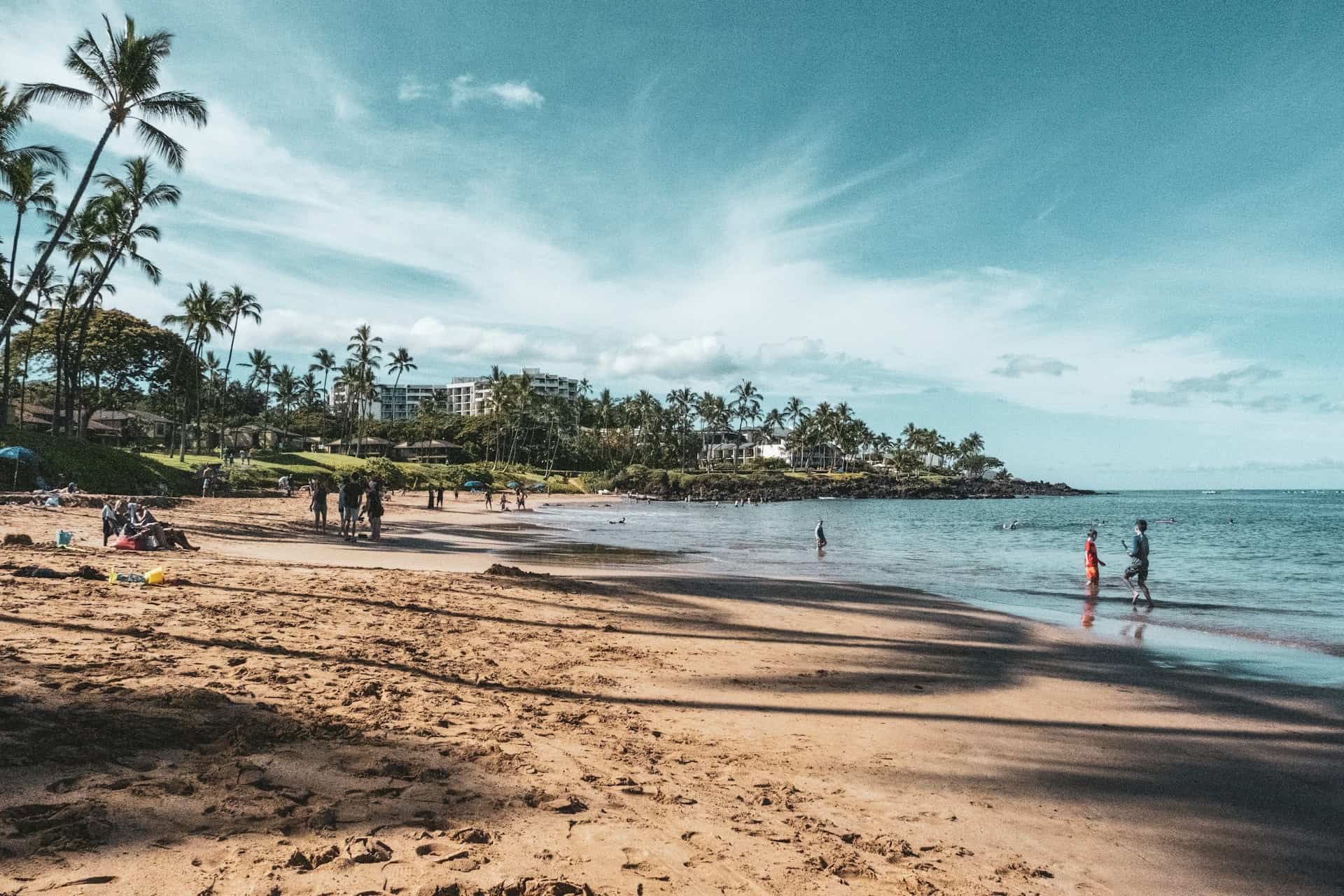
Wailea Beach is a crescent-shaped snorkeling haven that offers a blend of snorkeling and relaxation. For families, Wailea is a great spot to entertain all members.
While the snorkeling at Wailea Beach is good, given potential visibility issues, this may not be your first choice. But don’t let that stop you. Wailea Beach has wonderful coral reefs teeming with colorful fish. Be sure to keep your eyes peeled for heʻe mauli (octopus) peeking out from their dens and the occasional sea turtle enjoying breakfast (as they tend to be seen more in the early mornings.)
How to Get There
Wailea Beach is conveniently located in the luxurious Wailea Resort area, just south of Kīhei. Head south on Wailea Alanui Drive and turn right after passing the Grand Wailea Resort. Look for signs for Wailea Beach Park and you’ll find a parking lot with plenty of spots.
What to Expect
Wailea Beach is best snorkeled in the mornings before the afternoon winds pick up, which tends to stir up the water and reduce visibility. This also brings with it stronger currents. To be honest, visibility is often not great at Wailea Beach—especially near the shore—so it’s best to snorkel to the right side of the beach.
There are no lifeguards, but there are public restrooms with showers and changing facilities located at Wailea Beach Park.
Malu’aka Beach Snorkeling
Malu’aka Beach is one of Maui’s more secluded beaches, offering calm waters, diverse marine life, and a relaxed atmosphere. It’s located in Wailea, along the southwestern coast of Maui. Here’s why Malu’aka offers a unique snorkeling experience for all experience levels: it’s protected by a reef break offering calmer waters; rocky outcroppings on either end provide a healthy habitat for a variety of fish; and sea turtle sightings are common, especially the further out you go.
How to Get There
Drive south on Mākena Alanui Drive and you’ll pass Mākena Landing on your right. Continue until you see a public parking lot on the left (around mile marker 54). Take this turn and follow the path marked by yellow poles until you can take a left turn into the entrance to Malu’aka Beach. There’s a public parking lot available near the beach entrance.
What to Expect
You can expect typically calm and clear waters, although this is weather dependent. Regarding safety, swim at your own risk because there are no lifeguards. Malu’aka Beach has good amenities though including public restrooms—located near the parking lot—and a grassy picnic area offering shade and a wonderful spot to chill.
Molokini Crater Snorkeling
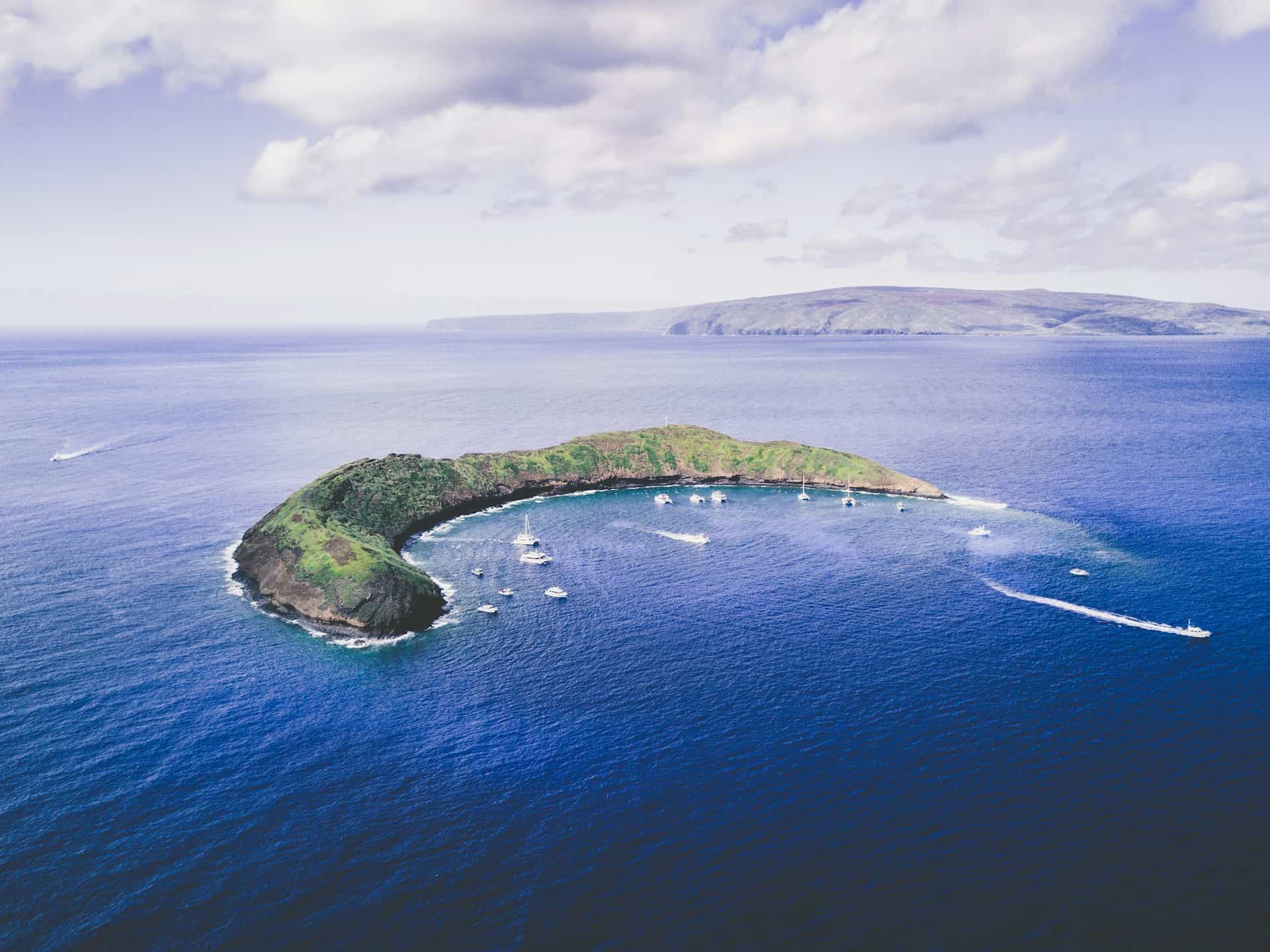
This next spot is considered the main snorkeling attraction of Maui, located about three miles off the southwestern coast—Molokini Crater. This spot is a partially submerged volcano crater formed from a volcanic eruption some 230,000 years ago. The best part is that it’s a protected cove offering exceptional visibility. You’ll find amazing coral reefs, all of those tropical fish you’ve seen in photos, and even the occasional sea turtle.
It’s important to remember that Molokini Crater is a protected marine life conservation area.
How to Get There
You can only get here by boat. The three areas to board are Mākena, Kīhei Boat Ramp, and Māʻalaea Harbor (if that sounds familiar to you, it’s where we at Maui Ocean Center are located). Prices vary depending on the operator, how long your tour is, and what gear is included so you can budget somewhere between $50 and $150 to start.
What to Expect
Molokini Crater is generally sheltered from strong currents and waves, however, mornings are still ideal as winds may pick up later in the day. Visibility is usually up to 150 feet, thanks to these clear and protected waters. There are no restrooms on the crater itself. Because this crater is protected, always be mindful of your surroundings and treat the environment around you with respect.
Best Snorkeling Beaches in Maui for Beginners
If you’re new to snorkeling, want a more relaxed experience, or have kids, consider these beaches that are great snorkeling spots for all of the above.
Pu’unoa Beach (Baby Beach) Snorkeling
This beach is located in West Maui and is protected by an offshore reef. This makes it exceptionally calm and shallow, perfect for families with young children. Due to its shallowness, there aren’t many coral formations but you may still encounter plenty of fish and the occasional sea turtle. For parents on relaxation duty, Baby Beach offers a lagoon-like feel great for simply floating around.
How to Get There
An easy drive, follow Keawe Street until you reach the beach access point. Parking can be limited, especially during peak season, so an early arrival is recommended.
What to Expect
As mentioned before, you can expect a protected snorkeling experience with more calm and shallow waters than other beaches. Some factors to definitely consider are that there are no public restrooms or places nearby to rent snorkeling gear, so prepare accordingly.
Kahekili Beach (Airport Beach) Snorkeling
Why’s it called Airport Beach? Because of its close proximity to Kahului Airport. When you’re not enthralled with the planes overhead, Kahekili Beach offers a wonderful snorkeling experience below the surface for all levels. This beach is generally protected from strong currents, making it ideal for those just starting out and for families. The underwater landscape changes from shallow and sandy to more vibrant coral reefs further out. Don’t worry, there’s plenty of fish—and even the occasional heʻe mauli (octopus) or puhi (moray eel)—to see.
How to Get There
Kahekili Beach Park is conveniently located at the end of Kai Ala Drive in Lāhainā, just northwest of the Westin Kāʻanapali Ocean Resort. You’ll see signs for the park as you head north on Honoapiilani Highway (Highway 30).
What to Expect
The reef starts just a few feet from shore but the further out you go, the healthier the coral. Visibility can be affected by weather conditions, so mornings are ideal for calm waters and good visibility. There are no lifeguards at the beach, but there are public restrooms, picnic tables, and showers you can use.
Kapalua Bay Snorkeling
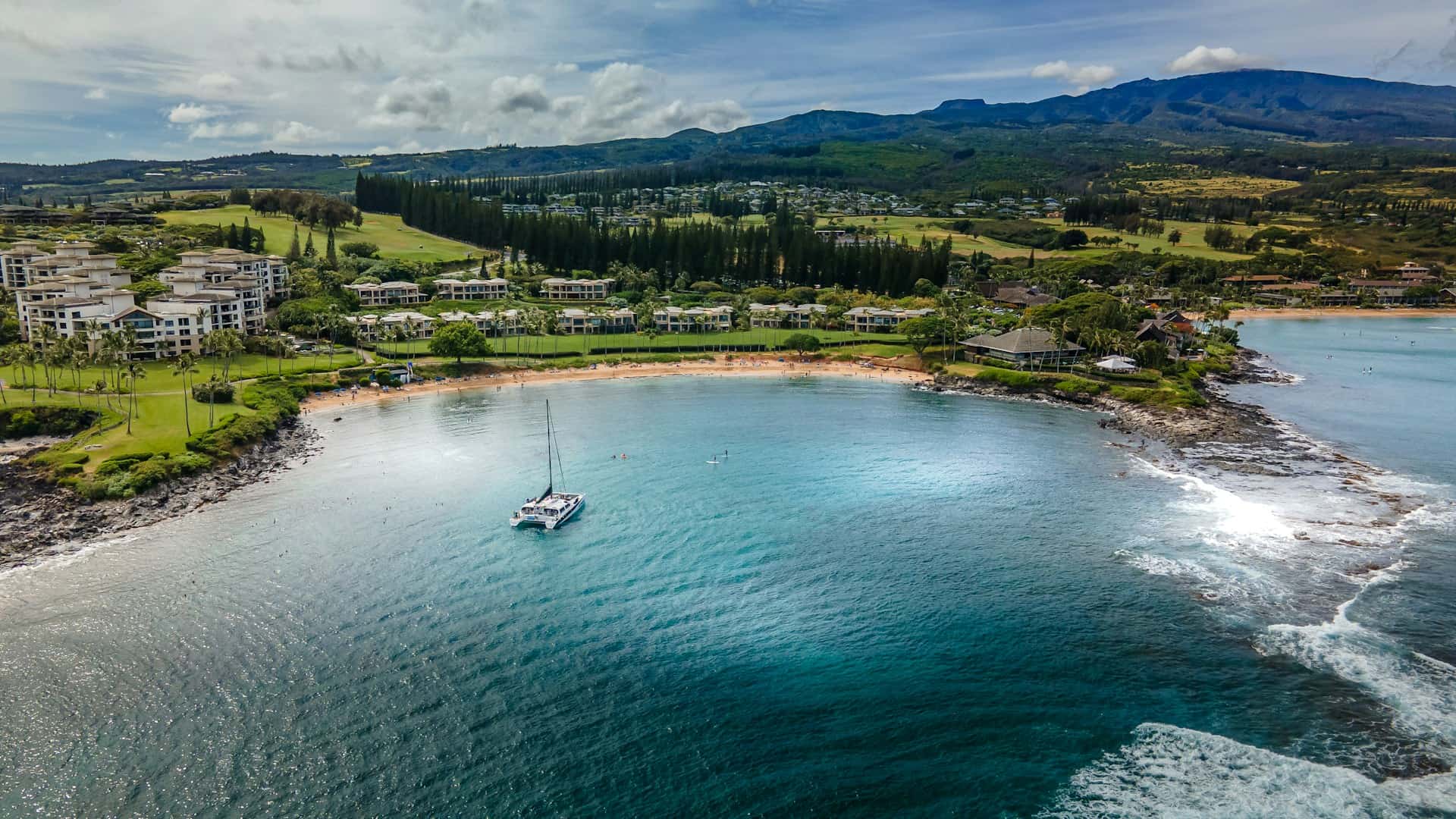
Kapalua Bay is great for families and first-time snorkelers, nestled on the northwest shore. It’s a crescent-shaped snorkeling marvel, offering calm waters with excellent visibility. Among the coral reefs, you’ll see colorful fish and even the occasional honu (Hawaiian green sea turtles).
How to Get There
Kapalua Bay is situated within the Kapalua Resort area on Maui’s northwest shore. If you’re driving from Kahului Airport, head west on Route 30 for about 35 miles. You’ll see signs for Kapalua Resort along the way.
Driving is most convenient and there is plenty of parking with a short walk to the snorkeling area. If you’re staying at Kapalua Resort, there is a free shuttle service to get you here too.
What to Expect
Expect great conditions for new snorkelers, in particular children. Because of its crescent-shape, the bay is often calm and protected with gentle waves. It’s easy to get into the water and currents aren’t particularly strong. It’s still best to avoid drifting out too far.

Best Time to Snorkel in Maui
You can snorkel in Maui year-round but there may be better times than others to do so. Let’s get into the best times to snorkel in Maui and what factors to consider.
May to September (Peak Season)
Peak season offers great snorkeling conditions with calm waters, good visibility, and warm temperatures. But be prepared for larger crowds and busier beaches as peak season is obviously the height of when tourists come. You may need to get to certain locations early for prime parking.
April & October (Shoulder Seasons)
These months are your brief periods between peak and off-peak seasons. They offer a good balance between avoiding crowds and enjoying warm weather conditions. While the water may be slightly less clear and there’s a chance of rougher seas, the benefits of fewer crowds and warm temperatures are appealing to some snorkeling enthusiasts.
November to March (Off-Peak Season)
If you choose to snorkel in the off-season, you may run into cooler water requiring a rash guard or wetsuit. There may also be rougher surf conditions. But the perks are tempting: fewer crowds, better deals on accommodation and activities, and the possibility of participating in whale watching season in Maui as well.
Daily Snorkeling Considerations
For the best snorkeling experience in Maui, aim for calm mornings or late afternoons. To stay on top of conditions, check your daily surf report. And of course, to take advantage of what our underwater world has to offer, consider planning your outing around high tide to explore deeper and more rich underwater environments.
Ultimately, the best time to snorkel depends on your preferences and what you want out of your underwater experience.
Is It Safe to Snorkel in Hawai’i?
Yes, it is safe to snorkel in Hawai’i. To ensure a safe and enjoyable snorkeling experience, snorkel with a buddy and be honest about your swimming skills. It’s important to remember that some of the beaches we’ve mentioned in this guide don’t have lifeguards on duty. Choose a suitable location, check weather conditions and ocean hazards, and consider using a life jacket if you’re not comfortable.
Important Snorkeling Info to Know
Our last gift to you in this guide is everything else you should know. We’ve offered up the top snorkeling spots on Maui and gave you the guidelines for the best times to go. Now, we’ll share with you the must-have things to bring, how to stay safe beneath the waves, and what you can do to protect our environment.
Gear Up
Don’t forget to pack:
- Snorkel gear including a mask, fins, and snorkel. Ensure your mask fits properly to avoid leaks and to maximize visibility. This equipment is available for rent around Maui.
- Reef-safe sunscreen to protect yourself from the sun while also protecting our delicate coral reefs. (Check out some great reef-safe sunscreens from Travel + Leisure here.)
- Swimwear and a cover-up to shield yourself from the sun between trips in the water.
- Water shoes, especially if the beach you’re going to is more rocky when entering and exiting.
- Beach towel so you can dry off and be comfortable.
- Snacks and drinks to stay hydrated and fueled throughout the day.
- GoPro or underwater camera to capture the underwater beauty before you. This is obviously optional but highly recommended.
Ocean Etiquette
For us, this one is the most important. We want you to have fun and experience the amazing underwater world of Maui. But we ask you to do it respectfully to protect our vulnerable ecosystem below the surface. Coral reefs are fragile so avoid touching or standing on coral. Damage can take years to recover from. Also be mindful of your fins and avoid kicking up sand that may harm marine life.
In efforts to respect and protect marine life, maintain a safe distance from fish and other creatures, like our beautiful sea turtles. Avoid chasing or harassing them, and observe them from a respectful distance to not disrupt their natural habitat.
When you’re done enjoying your time underwater, come up for air (without needing your snorkel) and visit us at Maui Ocean Center. We have amazing exhibits and marine life of our own for you to continue your undersea adventure on land. Reserve your tickets now!
When traveling to Maui there will never be a shortage of things and places to see. Make sure you’re always abiding by local and cultural laws when exploring the natural beauty of Maui and most importantly, relax! That’s what you came to do after all.

